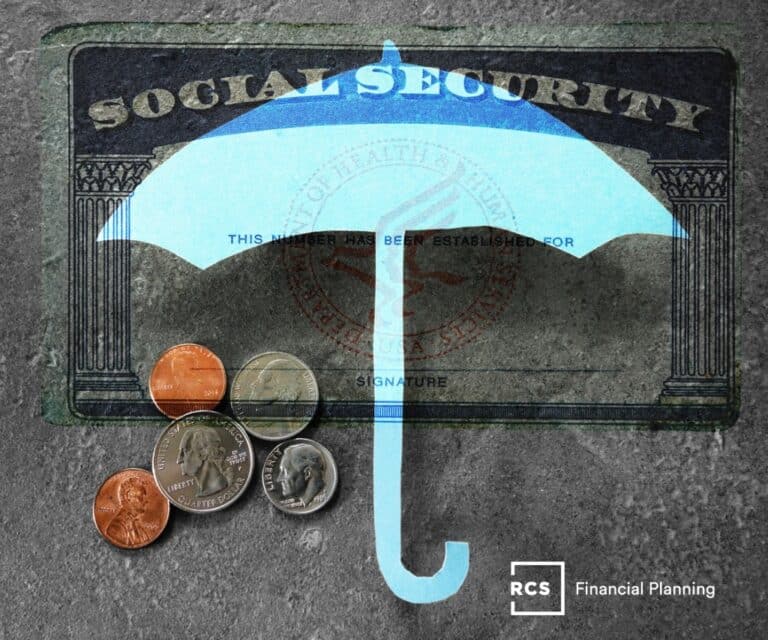Why the 4% Rule for Retirement is Outdated (And What Works Better in 2025)
Introduction: The Retirement Rule That’s Costing You Money
Are you banking on the 4% rule for your retirement withdrawals? As a financial advisor with 20+ years of experience guiding clients through retirement planning, I’ve witnessed this once-reliable rule consistently fall short for today’s retirees.
The hard truth? The 4% rule is a 30-year-old strategy that doesn’t account for:
- Increased longevity (many of us will live 20-30+ years in retirement)
- Changing spending patterns throughout retirement
- Today’s unique market conditions and interest rate environment
- Your personal financial situation and goals
In this guide, I’ll explain why the 4% rule is outdated and introduce you to risk-based guardrails – a dynamic approach that could help you enjoy retirement without the fear of running out of money.
What Is the 4% Rule for Retirement? Understanding the Basics
The 4% rule suggests that retirees can withdraw 4% of their initial retirement portfolio in the first year, then adjust that amount annually for inflation, without depleting their savings over a 30-year retirement period.
The Origin Story You Need to Know
Financial advisor William Bengen developed this rule in 1994 after analyzing historical market data from 1926-1976. His research, published in the Journal of Financial Planning, assumed:
- A portfolio with 50-60% stocks and 40-50% bonds
- A 30-year retirement timeframe
- Annual inflation adjustments to withdrawal amounts
While revolutionary at the time, Bengen’s analysis couldn’t account for today’s economic realities – including historically low interest rates, increased market volatility, and significantly longer retirements.
3 Critical Flaws of the 4% Rule (That Could Cost You Your Retirement)
1. It Ignores Longevity Risk
According to the Social Security Administration, a 65-year-old today has a 25% chance of living past 90. The 4% rule’s 30-year timeframe may leave you financially vulnerable in your later years.
2. It Fails to Account for the “Retirement Spending Smile”
Research by David Blanchett, head of retirement research at PGIM, shows that retirement spending typically follows a “smile” pattern:
- Early retirement (65-70): Higher spending on travel, hobbies
- Mid-retirement (70-85): Decreased spending as activity levels decline
- Late retirement (85+): Increased spending due to healthcare costs
The 4% rule’s fixed withdrawal approach doesn’t adapt to these natural spending fluctuations.
3. It Uses a One-Size-Fits-All Approach
Your retirement is unique, shaped by factors like:
- Your age at retirement
- Your health status and family history
- Your investment portfolio allocation
- Other income sources (Social Security, pensions)
- Your personal financial goals
A standardized withdrawal rate simply can’t optimize for your specific situation.
Risk-Based Guardrails: A Smarter Approach to Retirement Withdrawals
Risk-based guardrails offer a dynamic, personalized alternative to the rigid 4% rule. This approach, championed by retirement researcher Dr. Wade Pfau and financial planner Jonathan Guyton, adapts to changing market conditions and your personal circumstances.
How Risk-Based Guardrails Work
- Establish a personalized withdrawal rate based on:
- Your age and expected longevity
- Your portfolio composition
- Current market valuations and interest rates
- Your other income sources
- Set upper and lower guardrails (typically 20% above and below your initial rate) that trigger spending adjustments when crossed
- Monitor and adjust regularly based on:
- Portfolio performance
- Changing spending needs
- Market conditions
- Your overall financial situation
Real-World Example
Let’s look at how this might work for a retiree with a $1 million portfolio:
- Initial withdrawal rate: 5% ($50,000/year)
- Lower guardrail: 4% (triggers spending reduction)
- Upper guardrail: 6% (allows for spending increase)
If market performance causes the withdrawal percentage to exceed 6% (portfolio declines while spending remains constant), spending would be reduced to bring the withdrawal rate back within the guardrails. Conversely, if strong market performance pushes the withdrawal rate below 4%, spending could be increased.
The Retirement Stress Test: Ensuring Your Plan Can Weather Financial Storms
When developing retirement plans for our clients, we incorporate a comprehensive stress test that simulates how their portfolio would perform during major financial crises, including:
- The Global Financial Crisis (2008-2009)
- The Dot-Com Bubble (2000-2002)
- 1970s Stagflation
- The Great Depression
Unlike basic retirement calculators, our analysis doesn’t stop at the market downturn. We examine the entire recovery cycle to demonstrate:
- How long it takes for accounts to stabilize
- The impact on sustainable spending levels
- Strategies to mitigate these effects
This approach provides a realistic view of financial resilience and helps clients prepare for potential volatility.
Is It Time to Update Your Retirement Withdrawal Strategy?
If you’re still relying on the 4% rule, consider these questions:
- Do you expect to live longer than 30 years in retirement?
- Do you anticipate your spending needs changing throughout retirement?
- Would you prefer a flexible strategy that adapts to market conditions?
- Do you want a personalized approach rather than a generic rule of thumb?
If you answered “yes” to any of these questions, risk-based guardrails might be a better fit for your retirement planning needs.
Take Action: Secure Your Retirement with a Personalized Strategy
As retirement planning evolves, it’s crucial to move beyond outdated approaches like the 4% rule and embrace strategies tailored to your unique situation.
Risk-based guardrails offer a powerful framework for ensuring you can enjoy retirement with confidence while minimizing the risk of outliving your savings.
Ready to optimize your retirement withdrawal strategy? Schedule a complimentary 30-minute retirement analysis with one of our certified financial advisors. We’ll help you:
- Create a personalized withdrawal strategy aligned with your goals
- Assess your current retirement plan
- Determine if risk-based guardrails are right for you
Want a Retirement Plan That Works for You?
Don’t let outdated strategies dictate your lifestyle. Let’s build a tax-efficient withdrawal plan tailored to your unique retirement goals.
This material is provided for educational, general information, and illustration purposes only. You should always consult a financial, tax, or legal professional familiar with your unique circumstances before making any financial decisions. Nothing contained in the material constitutes tax advice, a recommendation for the purchase or sale of any security, or investment advisory services. This content is published by an SEC-registered investment adviser (RIA) and is intended to comply with Rule 206(4)-1 under the Investment Advisers Act of 1940. No statement in this article should be construed as an offer to buy or sell any security or digital asset. Past performance is not indicative of future results.






